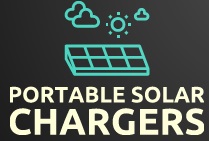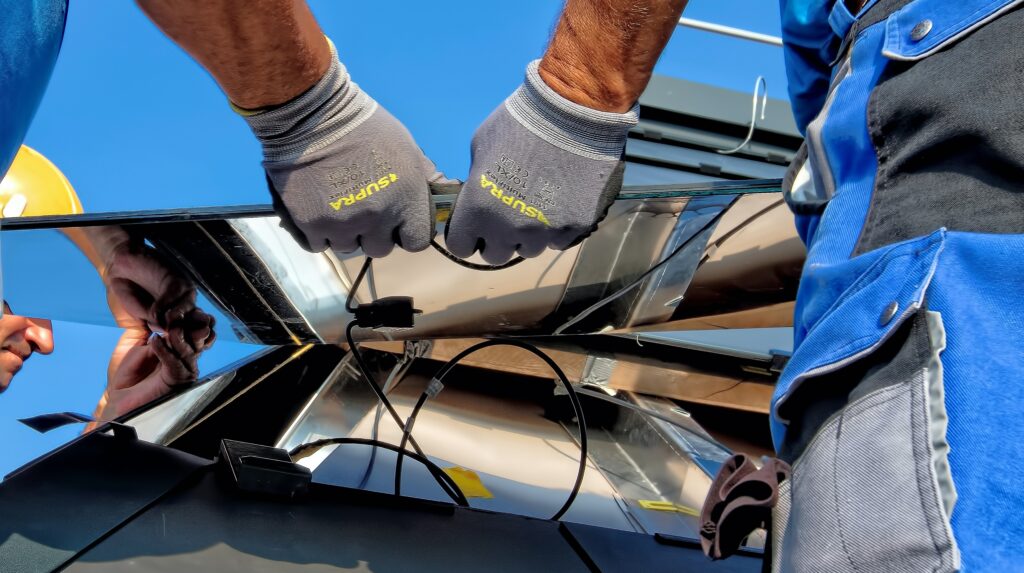In this article, you will explore the fascinating world of solar chargers and uncover the answer to the burning question: what is the lifespan of a typical solar charger? We will delve into the factors that can impact the longevity of these eco-friendly devices, shedding light on the durability and reliability of solar chargers. So if you’ve ever wondered how long your solar charger will last or if investing in one is worth it, sit back, relax, and let’s unlock the secrets of solar charger lifespans together.
Factors Affecting Lifespan of Solar Chargers
Solar chargers have become a popular choice for individuals and organizations looking to harness the power of the sun to charge their electronic devices. However, just like any other electronic device, the lifespan of a solar charger can vary significantly depending on a variety of factors. Understanding these factors is crucial in order to maximize the lifespan of your solar charger and get the most out of your investment.
Quality of Components
The quality of the components used in a solar charger plays a significant role in its overall lifespan. Each component, such as the solar panel, charge controller, battery, wiring, and connectors, must be of high-quality and built to withstand the test of time. Investing in a solar charger that uses high-quality components will not only ensure a longer lifespan but also guarantee better performance and efficiency.
Solar Panel
The solar panel is arguably the most critical component of a solar charger as it is responsible for converting sunlight into electricity. The lifespan of a solar panel can vary depending on the quality of the materials used and the manufacturing process. High-quality solar panels can last for 25 years or more, while lower-quality panels may start to degrade after just a few years.
Charge Controller
The charge controller regulates the flow of electricity from the solar panel to the battery, protecting the battery from overcharging or deep discharging. A high-quality charge controller can significantly extend the lifespan of the battery by ensuring its proper charging and preventing damage caused by improper charging.
Battery
The type and quality of the battery used in a solar charger are crucial factors that determine its lifespan. Different types of batteries, such as lithium-ion or lead-acid, have different lifespans. Additionally, factors such as charging cycles, depth of discharge, and the presence of a Battery Management System (BMS) can affect the overall lifespan of the battery.
Wiring and Connectors
The wiring and connectors used in a solar charger must be durable and capable of withstanding the environmental conditions they are subjected to. Poor-quality wiring and connectors can cause electrical resistance and lead to inefficient charging, reduced lifespan, or even safety hazards.
Usage Frequency and Intensity
The frequency and intensity of usage have a direct impact on the lifespan of a solar charger. Understanding how you use your solar charger and adapting your usage habits accordingly can help prolong its lifespan and ensure optimal performance.
Daily vs. Occasional Use
If you use your solar charger on a daily basis, it is essential to invest in a charger designed for frequent use. Daily use can put more strain on the components, especially the battery, which may lead to faster degradation. Occasional use, on the other hand, allows for longer periods of rest for the charger, resulting in a potentially longer lifespan.
Charging Power Requirements
The power requirements of the devices you intend to charge with the solar charger also play a role in its lifespan. If you frequently charge power-hungry devices that require a high charging power, the charger may experience more strain, potentially shortening its lifespan. It is crucial to ensure that your solar charger is capable of meeting the power demands of your devices without excessive strain.
Overcharging and Deep Discharging
Overcharging a battery can cause irreversible damage and significantly reduce its lifespan. Similarly, deep discharging, where the battery is discharged to very low levels, can also lead to diminished capacity and shorter lifespan. Proper usage habits, such as avoiding overcharging and deep discharging, can help extend the life of your solar charger’s battery.
Environmental Conditions
The environmental conditions in which a solar charger operates can have a profound impact on its lifespan. Understanding the challenges posed by different environmental factors and taking appropriate measures to mitigate them is essential for ensuring the longevity of your solar charger.
Sunlight Availability
The availability of sunlight is crucial for the operation of a solar charger. If you live in an area with limited sunlight, such as a region with frequent cloudy or rainy days, your solar charger may not be able to generate enough power to meet your charging needs. In such cases, it may be necessary to use alternative charging methods or consider a backup power source.
Temperature Extremes
Exposing a solar charger to extreme temperatures can lead to accelerated degradation of its components. High temperatures can cause the battery to degrade faster, while freezing temperatures can damage the wiring and connectors. It is important to protect your solar charger from extreme temperature conditions to ensure its longevity.
Humidity and Moisture
Moisture and high humidity levels can lead to corrosion of the charger’s components and promote the growth of mold or mildew. It is crucial to ensure that your solar charger is properly sealed, waterproof, and protected from excess moisture to prevent damage and extend its lifespan.
Dust and Debris
Dust and debris can accumulate on the solar panel, reducing its efficiency and blocking sunlight. Regular cleaning and maintenance, such as removing dust and debris from the solar panel and ensuring proper ventilation, can help maintain optimal charging performance and maximize the lifespan of your solar charger.
Maintenance and Care
Proper maintenance and care are essential for maximizing the lifespan of your solar charger. By following a few simple steps, you can ensure that your charger remains in optimal condition and continues to perform reliably for many years.
Regular Cleaning
Regularly cleaning your solar charger, especially the solar panel, can help maintain its efficiency and performance. Removing dust, dirt, and debris from the panel surface will ensure that the maximum amount of sunlight is absorbed, leading to more effective charging and a longer lifespan.
Protection from Physical Damage
Protecting your solar charger from physical damage is crucial to prevent any internal or external components from getting damaged. Avoid dropping or mishandling the charger, and consider using protective cases or covers when transporting or storing it. By preventing physical damage, you can extend the lifespan of your solar charger.
Storage and Transportation
Proper storage and transportation methods can also impact the lifespan of your solar charger. When not in use, store your charger in a cool, dry place away from direct sunlight and extreme temperatures. When transporting your charger, ensure that it is securely packed and protected from any potential damage.
Replacement of Faulty Components
In the event that a component of your solar charger becomes faulty or fails, it is important to replace it promptly. Ignoring or neglecting faulty components can lead to further damage and potentially shorten the overall lifespan of the charger. Regular inspection and identification of faulty components will help ensure the longevity of your solar charger.
Battery Degradation
Battery degradation is an inevitable process that occurs over time and affects the overall lifespan of a solar charger. Understanding the factors that contribute to battery degradation can help you take the necessary steps to extend its lifespan.
Chemical Composition
The chemical composition of the battery can influence its lifespan. Different types of batteries have different chemical compositions, and some are more resistant to degradation than others. Lithium-ion batteries, for example, tend to have longer lifespans compared to lead-acid batteries.
Charging Cycles
The number of charging cycles a battery goes through can impact its lifespan. Charging and discharging a battery count as one cycle. Manufacturers typically provide information about the expected number of cycles a battery can withstand before its capacity starts to degrade. Managing charging cycles and avoiding unnecessary cycles can help extend the lifespan of your solar charger’s battery.
Depth of Discharge
The depth of discharge, or how much the battery is discharged, can also affect its lifespan. Deep discharges, where the battery is discharged to very low levels, can cause more significant damage and shorten the overall lifespan. Limiting the depth of discharge and avoiding fully discharging the battery whenever possible can help extend its lifespan.
Battery Management System (BMS)
A Battery Management System (BMS) is a critical component that helps monitor and protect the battery. A BMS ensures that the battery is charged and discharged properly, preventing damage caused by overcharging, deep discharging, or extreme temperature conditions. Choosing a solar charger with a high-quality BMS can help maximize the lifespan of the battery.
Potential Lifespan of Solar Chargers
The potential lifespan of a solar charger can vary depending on various factors, including the quality of components, usage habits, environmental conditions, maintenance, and battery degradation. While it is challenging to provide an exact lifespan for a solar charger, it is possible to estimate a general range based on industry standards and user experiences.
Average Lifespan Range
On average, a well-maintained and high-quality solar charger can have a lifespan of 5 to 10 years. However, with proper care and usage, some solar chargers have been known to last even longer. It is important to note that the lifespan can be influenced by the factors mentioned earlier, and individual results may vary.
Examples of Long-lasting Solar Chargers
Some solar chargers on the market have gained a reputation for their longevity and durability. These chargers, often made with high-quality components and designed for optimal performance and longevity, serve as excellent examples of what can be achieved when investing in a reliable solar charger.
Ways to Extend Lifespan
If you are looking to extend the lifespan of your solar charger and maximize the return on your investment, there are several steps you can take:
Investing in High-Quality Chargers
Choosing a solar charger that is built with high-quality components will inherently increase its lifespan. Do thorough research, read reviews, and consider reputable brands that offer warranties and excellent customer support. It may be tempting to opt for cheaper alternatives, but they often come with lower quality components and shorter lifespans.
Proper Usage and Maintenance
Developing good usage habits and providing regular maintenance are key to extending the lifespan of your solar charger. Avoid overcharging or deep discharging the battery, clean the solar panel regularly, and protect the charger from physical damage. Following the manufacturer’s instructions and guidelines will help ensure the optimal performance and longevity of your solar charger.
Upgrading Components
In some cases, upgrading specific components of your solar charger can help improve its overall performance and extend its lifespan. For example, upgrading to a higher-capacity battery or a more efficient solar panel can enhance charging capabilities and increase durability. Consult with a professional or the manufacturer to determine the appropriate upgrades for your specific needs.
Ensuring Optimum Charging Conditions
Creating and maintaining optimal charging conditions can have a significant impact on the lifespan of your solar charger. Ensure that the charger is exposed to sufficient sunlight, protected from extreme temperatures and excessive moisture, and properly ventilated. By providing the charger with the ideal charging conditions, you can help prolong its lifespan.
Signs of Degradation and Replacement
Despite your best efforts, there may come a time when your solar charger starts to show signs of degradation. It is important to be aware of these signs and consider replacing your charger when necessary.
Decreased Charging Efficiency
If you notice that your solar charger takes longer than usual to charge your devices or fails to reach its maximum charging capacity, it may be a sign of decreased charging efficiency. This could indicate a problem with the solar panel, charge controller, or battery, and it may be time to consider replacing the charger.
Reduced Battery Capacity
Over time, the battery in your solar charger will naturally lose its capacity. If you find that the battery no longer holds a charge for as long as it used to or if it quickly drains even with minimal usage, it may be a sign of reduced battery capacity. In such cases, it is advisable to replace the battery to ensure optimal performance and charging capabilities.
Physical Damage
Physical damage to your solar charger, such as cracks or breaks in the housing, frayed or exposed wiring, or loose connectors, can compromise the charger’s functionality and safety. If you notice any physical damage, it is important to assess the extent and consider replacing the charger if the damage is severe or irreparable.
Frequent Malfunctions
Consistent malfunctions or instances where your solar charger fails to function correctly despite proper usage and maintenance could be indications of internal component failure. If these malfunctions persist or become more frequent, it is advisable to consult with a professional or consider replacing the charger altogether.
Conclusion
Understanding the factors that can affect the lifespan of a solar charger is essential for making an informed decision and ensuring optimal performance and longevity. By considering the quality of components, usage frequency and intensity, environmental conditions, maintenance and care, and battery degradation, you can maximize the lifespan of your solar charger and get the most out of your investment.
Choosing a solar charger that is built with high-quality components, following proper usage and maintenance guidelines, creating optimal charging conditions, and being proactive in identifying signs of degradation or faults will help extend the lifespan of your solar charger. By doing so, you can enjoy the benefits of sustainable and eco-friendly charging while reducing the environmental impact of electronic device usage.
In conclusion, investing in a high-quality solar charger, using it responsibly, and taking proper care will ensure that you can rely on solar power for years to come. With these considerations in mind, you can make an informed decision when selecting a solar charger, promote sustainable use, and contribute to the preservation of our planet for future generations.




